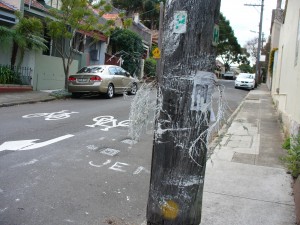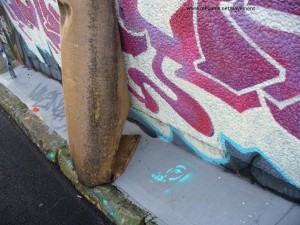Sometimes it’s a case of ‘you had to be there’. In several streets where I have walked, mainly in the 1st to 4th arrondissements, there are these large paintings on the pavement of a foetus, sometimes in the womb. They are not stencils but the uniformity of the different renditions and their size suggests that the act of painting them involved a performance calibrated to the artist’s body measurements. I could speculate about what event, cause or band they were advertising, but really I don’t know. I suppose the meaning of this graffiti was understandable at the time when it was done.
The foetus in Rue des Halles is an example of ‘layering’, where one piece of pavement graffiti is laid over another – in this case the ‘official graffiti’ of a pedestrian crossing. The photograph also shows a pair of police on roller blades.




















